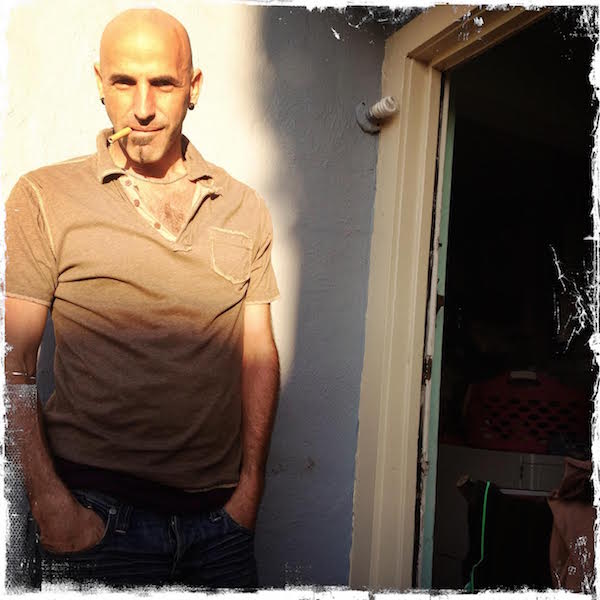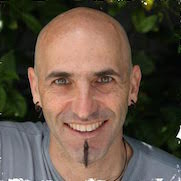
“Thank you for helping me break my addiction,” he said, with a grateful look in his eyes.
I didn’t know what he was talking about.
“You sent an email to our list with the steps to healing an unhealthy habit. They made the difference. Thank you.”
I felt that familiar glow that happens when I realized I’ve helped someone. I can’t tell you how great that made me feel. I simply shared a process I created for a coaching client, and he took it and ran with it, and it changed his life.
Here it is. If you need it, take it and run.
Humans are creatures of habit. We thrive with routine, and our habits make up who we are. A habit is simply a pattern of behavior that becomes unconscious with frequent repetition. Many people can get through huge portions of their day without making any new decisions: what to eat for breakfast, which pocket to put our keys, which way to go to work, etc, etc, etc.
Operating out of habit is what allows us to function at a higher level.
For instance, our ability to walk without having to think about which part of our foot to place on the ground first allows us to take a walk with a friend and have a conversation. However, as a yoga teacher, I work with a lot of people who have bad backs because of the way they walk. We don’t have to think about the way we walk, but if it’s causing us trouble, we need to change.
The key to changing a habit is to bring what is unconscious into consciousness.
The following seven-step process can be used for any habit: distraction, bad posture (I corrected mine as I typed that), overeating, substance use, spousal abuse, giving up…you know yours. For the purpose of simplicity and illustration, I’m using the example of cigarette smoking. The important thing when using this process is to acknowledge which step you are on and move towards the next one.
As you’ll see, the progression is to catch ourselves earlier and earlier in the process.
Here’s how to heal an unhealthy habit:
1. Identify a specific problem (eg: “I’m short of breath”).
To begin, we need to notice and honor the existence of a problem. We can function in spite of the gradual onset negative symptoms for great lengths of time. The smoker might think their reduced breathing capacity is simply what they should expect at their age, and at this stage it’s simply acknowledging that not everyone has that issue, and it might be behavioral.
2. Notice that there is a habit creating that problem (“My smoking is affecting my lungs”).
Once we’ve acknowledged the problem, we look backwards towards what behaviors are causing it. Lung pain from smoking may be obvious, but neck pain could be from so many things, we have to discover which habit is causing the problem.
3. Notice when you’ve just acted in the habitual way (“I’ve just smoked a cigarette and I can feel the effects”).
Here we are acknowledging the issue after the fact.
Many people get caught in a shame spiral here, but don’t: simply honor that you’re already at step three and getting closer to the solution.
At this stage we want to begin to disengage from identifying with the habit. That is, the subconscious mind twists “I am a smoker” into “if I stop smoking I am not myself,” and will react to losing the habit almost the same way it would to losing a limb. Let the sensible part of you remember that not only will you still exist if you don’t perpetuate your habit, but you will live a better life.
4. Notice that you’re in the middle of the habit (“Hey, there’s a cigarette in my mouth, I should quit soon”).
I’ve heard this so many times from smokers: “Man, I should quit smoking…[puts cigarette back in mouth, deep inhale, laughs it off].”
This is a very important stage in your habit-breaking—here, your awareness has come alive and you have caught yourself in the act.
When a behavior goes unconscious into compulsive habit-land, it usually drags the enjoyability of it into unconsciousness as well. All habits begin seeming like an enjoyable good idea from some perspective. So we’re doing something we used to enjoy without noticing whether we’re enjoying it anymore.
So until you’re ready to give it up, take this moment to actually enjoy it. The unconsciousness of the habit makes the benefit unconscious, too.
At this stage it is important to get a sense of two things: The desire you are trying to meet from your habit (relaxation, looking cool, sense of feeling high) and the cost of your habit (coughing, decreased breathing capacity, risk of lung cancer).
The risk at this stage is feeling powerless to help yourself. When you catch yourself but don’t stop yourself it can be demoralizing. Remember that you are choosing to enjoy and explore what is happening, and you will feel more at choice and more ready for the next stage.
Consider this progress.
5. De-rail the habit mid pattern (pull the cigarette out of your mouth and put it out).
My moment of awakening around this: I was on a sugar fast for a bit, found myself at a potluck and there was a bowl of chocolate covered almonds. I was standing there talking to someone next to the bowl, reached over, grabbed a small handful, and dropped a couple in my mouth. I realized I was in the middle of a habit, so I spit the chocolate out (a sacrilege, I know, but that was when I got it).
This is the turning point. You’ve let it go on long enough and have made the choice to move forward.
Sometimes you’ll put out several cigarettes before you’re through and that’s okay.
6. Notice you’re at the beginning of the cycle (“I’ve got a cigarette in my mouth and I’m about to light it”).
So there’s this moment, you’re engaged in the conscious shifting of a pattern to something healthier for you, you are somewhat in the grips of the pattern and at a powerful decision point. Do you launch into the habit? Can you at least pause here to consider what need you expect to meet by engaging in the habit, before you launch it again? And once identified, is the habit really the best way to meet that need?
Just now, writing this, the Facebook notification sound came on. Like Pavlolv’s dog I wanted to switch windows and check it. Pausing to thinking about it, the need was “feeling loved.” That Facebook ping let me know someone I care about said something that would remind me of our connection. I realized that I am loved even without checking, and was able to get back to writing.
Besides, writing this might generate even more good feelings and more connections…
When you get better at noticing this “about to begin” stage, it is a very powerful place to stop, put the cigarette back, or maybe hand off the pack to someone in prison that can trade it for toothpaste.
7. Notice that the cycle is about to start (“I’m about to reach for my cigarettes”).
We’ve been raising our awareness, catching ourselves earlier and earlier in the process. At this stage we have caught ourselves before we’ve even begun. This is a huge victory.
Since by now you’ve identified the needs, we can find better, healthier ways to meet those needs. Smokers sometimes talk about wanting a break, to take a deep breath. One smoker called it a friend for two minutes. Some smoke for the oral fixation. Ronald Reagan famously chose jelly beans over cigarettes, which can be helpful for the negative effects of smoking, but is really replacing one bad habit for another. In that case it addresses the oral fixation, but probably not the underlying need that had him reach for something to put in his mouth.
Instead you could take a break and breathe clean air, let clean air be your best friend for two minutes. I even created a prana-cigarette, which some of my smoker friends have used to help them quit. It’s basically a bamboo straw that you can use to feed the oral fixation, while learning how to enjoy a pollution-free breathing break.
Once you regularly make the better choice here, you will realize you have broken the habit. Congratulations!
Remember:
All along the way, whether it’s the day you move forward to the next step, or just hang out in the current step for one more day, celebrate yourself just for noticing where you are. Awareness is the prerequisite for progress and should be celebrated. Raising our awareness is the real yoga. It allows us to act more intentionally, interrupt unhelpful patterns, and create the empowering actions that help us fully enjoy our lives.
Please share freely and let me know how this has worked for you or your loved ones. If you need help, I’m here for support.
Relephant:
Read This & Instantly Quit Smoking.
Neuroscience & Why Changing Our Habits is Hard.
Author: David Schlussel
Editor: Renée Picard
Photo: Author’s Own











Read 1 comment and reply